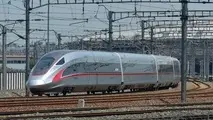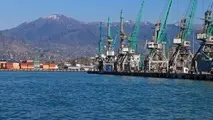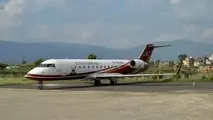Thailand to China high-speed: green lights and warning signs

The Thai junta recently gave the go-ahead for a $5.2bn high-speed rail link to China. But in the wake of a series of legal and technical difficulties that have already delayed the project by two years, can we really expect ground to be broken anytime soon? Ross Davies reports.
The Thai Government’s decision in July to approve a high-speed rail link to China will have been met with great cheer in Beijing.
The approval is a boost to Premier Xi Jinping’s ‘One Belt One Road’ initiative, which focuses on connecting China to its South East Asia neighbours and, in turn, boosting its trading potential.
Set to cost $5.2bn, the project will ultimately link Kunming in the southern province of Yunan all the way to Singapore, running through Laos, Thailand and Malaysia.
While construction of the line has already begun in Laos, ground-breaking on the Thai section of the track is long overdue. Work was meant to commence in 2015, but has been waylaid due to a series of breakdowns in Sino-Thai negotiations over financing and labour.
Thailand’s junta, headed by Prime Minister Prayuth Chan-ocha, has reportedly pledged THB179bn ($5.3bn) to cover a four-year plan for the proposed 850km track running from Bangkok to Nong Khai on the Laos border.
What does Thailand stand to gain from One Belt One Road?
While Beijing has been predictably upbeat in its praise for the Thai cabinet’s go-ahead, the project has attracted its fair share of scepticism.
Some analysts believe the project makes little commercial sense from a Thai perspective. In the eyes of Joshua Kurlantzick, a senior fellow for South East Asia at the Council on Foreign Relations, the Thai junta may be using the agreement simply to flex its geopolitical muscles.
“I think a fair amount of the initial interest from the Thai side was in bolstering strategic links with Beijing, especially at a time when the Thai junta was being ostracised by many Western democracies,” he says. “The junta may want to break ground as a show of power.”
"I think a fair amount of the initial interest from the Thai side was in bolstering strategic links with Beijing, especially at a time when the Thai junta was being ostracised by many Western democracies."
Agatha Kratz, associate policy fellow at European Council on Foreign Relations also raises questions over what kind of passenger-freight ratio the line will carry – as yet unspecified by either the Chinese or Thai Governments – and if it even qualifies as high-speed.
“It is still unclear what exactly the project will be used for,” she says. “It’s will likely be a mix of passenger and freight, but in the absence of more details, it is hard to predict. Note here that the project isn’t high-speed, per say, but rather planned to have a medium speed of 160km/h.”
Instead, argues Kratz, it would be more beneficial for Thailand to invest in improving its rail and road infrastructure within its own borders.
The best of friends: A new age in Sino-Thai relations
A range of socio and geopolitical factors also need to be taken into account here. Since seizing power in 2014, the Thai junta has been not shy about aligning itself with Beijing, having reputedly spent millions on Chinese arms in exchange for investment in local projects.
For instance, last year the Thai cabinet announced the construction of a new dual-track train line from Bangkok to the north-east province of Nakhon Ratchasima. The construction work has been delegated to the Chinese.
With sluggish economic growth and a need to kick-start exports, which have also flagged of late, some can understand the rationale behind the rail link to China – Thailand’s biggest trading partner after Japan.
“Thailand really needs to generate exports,” says Carlo Bonura, senior teaching fellow in South East Asian Politics at SOAS University of London.
“They see this link with China,” he says, “as a way to kind of guarantee the future success of Thailand’s industry in terms of its exports. Then there are the consumer products that go to Japan and how this might facilitate Japanese industrial supply chains.”
"The deal they have worked out with the Chinese Government is that financing will be public debt – most likely from Chinese banks."
Prayuth has said that Thailand will cover the construction costs for the first 250km phase of the project, but with $40bn worth of local infrastructure projects reputedly already on the go – including $20bn earmarked for investment in the country’s eastern economic corridor – how will the country foot the bill?
“I believe the Thai Government is committed to private funding for the eastern economic corridor infrastructure projects,” says Bonura.
“In terms of the One Belt One Road initiative,” he continues, “the deal they have worked out with the Chinese Government is that financing will be public debt – most likely from Chinese banks.”
Labour is also an issue. Thailand’s design industry is said to be decidedly unimpressed that the majority of technical expertise will come from China.
“There has been some public criticism that the Thai Government has signed an agreement that doesn’t necessarily promote national interest,” Bonura adds. “Will there be any Thai engineers at all gaining any kind of expertise on building high-speed railways? I think the answer is probably no.”
The end of a long delay?
Perhaps the most salient question of all is: can significant ground really be broken in September, as Bangkok is claiming? Given the previous, dilatory negotiations between the two sides, Katz thinks this is unlikely.
“There might well be a ground-breaking ceremony, should both sides want to clearly and officially reassert their commitment to the line,” she says, “but financing, legal and technical disagreements are still many, and mean that actual construction will likely be delayed for a while longer.”
Through the invocation of Section 44 – part of the controversial Junta-drafted 2014 constitution that grants government sweeping powers – Bonura believes the September start date not beyond realms of possibility.
“I’d be surprised if there wasn’t some kind of ground-breaking by the end of the year,” he says, “But how long will it take to build this?
“Where will the equipment be coming from? Who will actually be building it? All those things are not known yet. Those unknowns could generate a certain amount of public controversy.”



